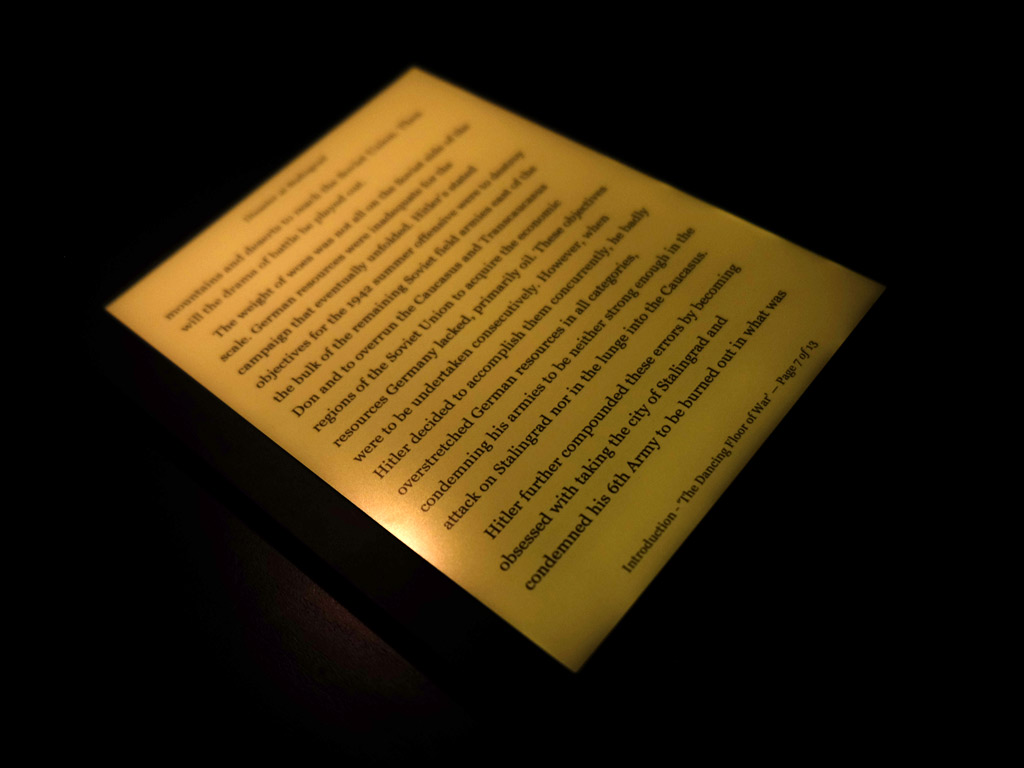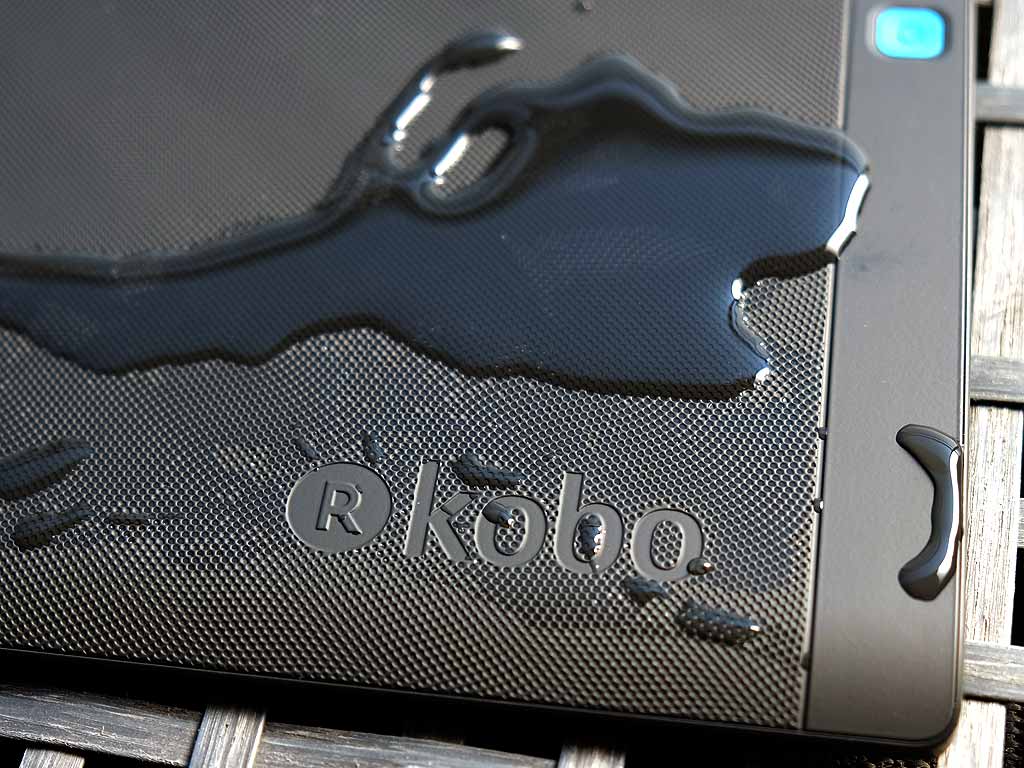
Reading a book on a breezy afternoon at the pool, or after a long day while sitting in the tub are two scenarios the Kobo Aura H2O is made for. An eReader with a lighter build and better waterproofing makes this ready to go with you anywhere.
This is the second edition of the Aura H2O, a device Kobo first introduced in 2015, only expands on that base by adding better waterproofing and other features seen in Kobo’s other eReaders.
A newer body
It’s fairly obvious from the outset that Kobo modeled this H2O more after the recent Kobo Aura One than it did the H2O’s predecessor. This new Aura H2O is noticeably shorter from top to bottom, and even a teeny bit slimmer on the sides.
The back is also textured and rubberized to offer better grip, especially when wet. The blue power button is in the usual spot up top, while the microUSB charging port is at the bottom. The port is exposed this time, marking another difference from the previous model, which used a cover.
Waterproofing gets a boost by going to IPX8 rating, meaning it can be submerged up to two metres underwater for up to one hour. That’s essentially double what the previous model could do (one metre for up to 30 minutes). Interestingly, this is the same exact waterproofing standard Kobo had included in the Aura One, adding to the confluence between the two devices.
The one casualty in all this is the microSD slot. It’s gone, so the 8GB of internal storage is the only option for storing ebooks. It can hold up to 6,000 with what it has, so chances are, your library won’t exceed that.
The screen
The 6.8-inch Carta E Ink display carries over the same 265dpi resolution as the previous Aura H2O, though is still less than the Aura One’s 300dpi. The difference is pretty negligible when it comes to text, unless you feel you have a really fine eye for that kind of detail. The added pixel density in the Aura One makes more of a difference for images, illustrations and graphics.
It certainly doesn’t hurt that Kobo wisely chose to bring in its ComfortLight Pro technology, reducing blue-light exposure by adjusting the hue to more of a yellow-orange to go easier on the eyes at night or in the dark. This does work automatically, but is also manually customizable. Simply swiping up and down adjusts screen brightness, but the hue itself requires going through the screen setting.
The display works in much the same way as the Aura One, at least as it pertains to touch and responsiveness. Swiping or tapping the sides to flip pages is seamless. Holding a finger down on a word still pops up a definition. Dragging a finger still lets you highlight passages to make notes. Tapping the top right bookmarks a page.

Reading with the new Aura H2O
The Kobo Store has 5 million ebooks to purchase and download directly from the Aura H2O, but the full breadth of content access goes much further.
The OverDrive service Kobo brought into the Aura One is also here, enabling access to public libraries. To borrow ebooks from them, however, you need to obtain a library card number. The cool part in doing it is that you can borrow books from libraries in Canada, the U.S., U.K., Australia and New Zealand, when visiting any municipality in any of those countries.
That’s on top of the copyright-free ebooks available through Project Gutenberg and other websites offering public domain works and documents. Since the Aura H2O recognizes a number of formats, including EPUB, EPUB3 and PDF for ebooks, along with CBZ and CBR for comics, it can basically read any of those files.
Then there’s Pocket, a neat app for sending web links to read articles and other stories later on the Aura H2O.
Like other eReaders these days, the metrics attached to reading itself are fairly extensive here. Time left finish a chapter or entire book, percentage completed, and much more headline a lot to look at.
The 6.8-inch display is one inch smaller than that of the Aura One, but I didn’t mind the difference all that much. Given the similarities between the two, otherwise, it’s one of the subjective points that might determine which model to go with. Those who travel a lot might prefer the Aura H2O simply because it’s lighter and takes a little less room.

Weight, waterproofing and battery
The lighter weight of this Aura H2O, compared to its predecessor, is one of those things that I appreciated over time. It didn’t occur to me at first until I actually held them both together and realized I had been holding a lighter device. The smaller frame is clearly a factor in making that happen.
Lounging in a hot tub reading a chapter or two felt great, though it didn’t come as a surprise to me. Having experienced the same thing with the first Aura H20 and Aura One, I wasn’t concerned about exposing it to too much water. If anything, the peace of mind was knowing the IPX8 rating is more water-resistant.
Battery life is excellent, which was also unsurprising. The “weeks of battery life” Kobo claims is largely true if you’re reading sporadically. But truth be told, several hours of reading at moderate brightness levels doesn’t make much a dent. I could finish a book and probably still have 90% left. Always nice to see that kind of retention if a vacation is coming up.
Final thoughts
The new Kobo Aura H2O is a nice iteration of a good product, but if you already have the previous version and are happy with it, there’s no immediate need to upgrade. The difference with the Aura One is based (mostly) on the display. If you want a larger screen, go with the Aura One.
Being able to read comfortably in water (avoid saltwater though) is one of those conveniences anyone can really appreciate. The device is responsive and easy to use, no matter the setting, keeping in line with the two Kobo models that preceded it.
The Kobo Aura H2O (Edition 2) is available now. The Sleepcover case for the device is also available.



